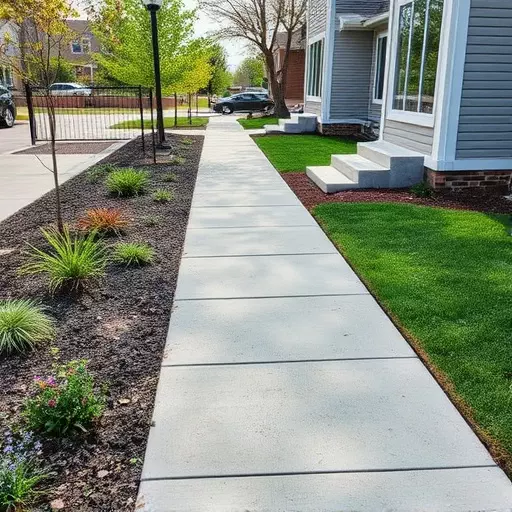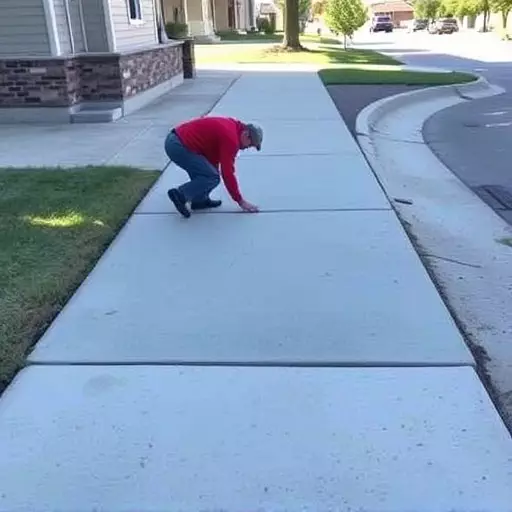The concrete sidewalk installation process in Toledo involves meticulous preparation, including site clearance, drainage systems, and a solid foundation. Skilled labor ensures accurate formwork, pouring, and curing for strength. Benefits include superior durability, low maintenance, and customizable designs via stamped concrete techniques, making it a popular choice to enhance public spaces with aesthetically pleasing, cost-effective solutions.
In today’s public spaces, a well-designed concrete sidewalk is not just functional—it’s an investment in community aesthetics and accessibility. This article explores the multifaceted benefits of concrete sidewalks, from their durable construction offering long-term cost savings to their versatility in enhancing urban landscapes. We delve into the installation process specific to Toledo, providing a step-by-step guide, essential tools, and site preparation tips. Additionally, we uncover the art of stamped concrete sidewalks, their design potential, and maintenance secrets. Choosing the right contractor is key; learn what to consider for quality, safety, and satisfaction.
- Concrete Sidewalk Installation Process Toledo
- – Step-by-step guide to installation in Toledo
- – Tools and materials required
- – Pre-installation site preparation
Concrete Sidewalk Installation Process Toledo
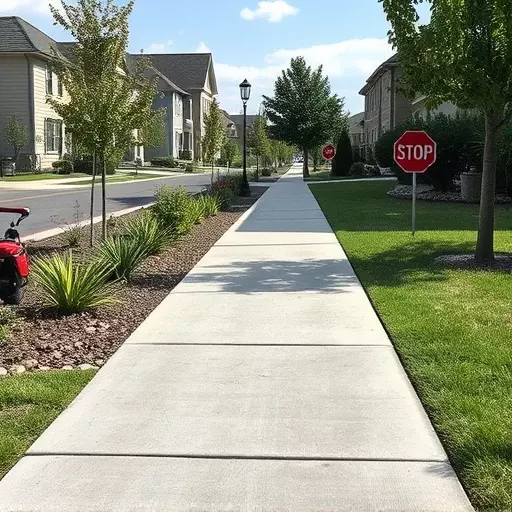
The concrete sidewalk installation process in Toledo involves several meticulous steps to ensure a durable and aesthetically pleasing finish. It begins with thorough site preparation, including removing existing surfaces and installing proper drainage systems to prevent water accumulation. The substrate is then leveled and compacted to create a solid base. Next, skilled laborers pour and form the concrete, often utilizing stamped concrete techniques to achieve desired patterns and textures. These methods add a unique visual appeal while enhancing traction and safety with textured surfaces.
Once the concrete sets, it undergoes curing to strengthen and improve its durability. This process involves controlled moisture levels and temperature to ensure optimal concrete properties. The final step includes sealing and finishing, where specialized products protect against stains and wear, ensuring the sidewalks’ longevity. Benefits of concrete sidewalks in Toledo include superior strength, low maintenance requirements, and customizable designs through stamped concrete, making them a popular choice for enhancing public spaces.
– Step-by-step guide to installation in Toledo
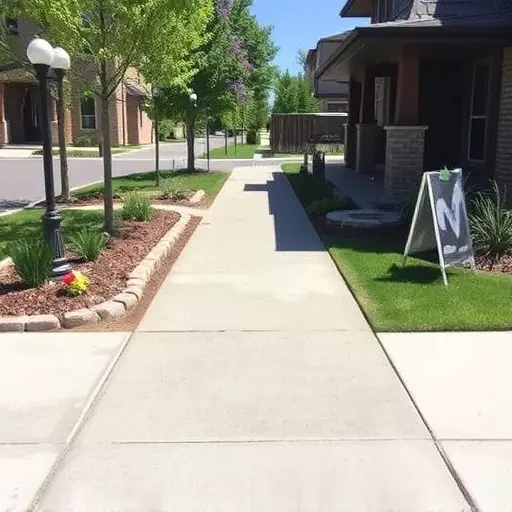
Installing a concrete sidewalk in Toledo is a straightforward process that offers numerous benefits for public spaces. Here’s a step-by-step guide to help you through it:
1. Planning and Design: Begin by assessing the area where the sidewalk will be installed. Consider factors like existing infrastructure, foot traffic, and any specific design preferences. Create a detailed plan outlining measurements, material specifications (including stamped concrete options), and desired aesthetics. This phase is crucial for ensuring a well-integrated and functional result.
2. Preparation: Once your design is finalized, clear the site of any debris or obstructions. Ensure proper drainage by grading the soil to direct water away from the sidewalk area. Install any necessary utilities like underground cables or pipes. Laying down a solid foundation is key; compact the soil and consider adding a layer of base material, such as crushed stone, for stability and water runoff.
3. Formwork and Pouring: Set up formwork according to your design. This could involve using wooden planks or metal forms to create the desired shape and elevation. After setting the forms, pour the concrete mixture, ensuring it’s compacted evenly. For a unique look, consider stamped concrete techniques during the pouring stage.
4. Curing and Finishing: Allow the concrete to cure properly, typically requiring 24-48 hours of moisture. Once cured, remove the formwork carefully. Finish the sidewalk by smoothing any rough edges and applying a suitable sealer to protect against stains and water damage. Regular maintenance will ensure your concrete sidewalks remain in top condition for years.
Benefits of concrete sidewalks include durability, low maintenance, and versatility in design. Stamped concrete options allow for intricate patterns and styles, enhancing the aesthetic appeal of public spaces.
– Tools and materials required
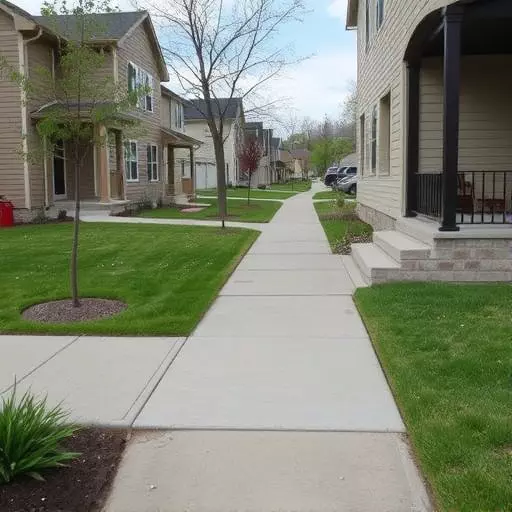
The concrete sidewalk installation process in Toledo involves a series of precise steps and specific tools to ensure a durable and aesthetically pleasing finish. This includes preparing the subbase, placing rebar for reinforcement, pouring the concrete, and utilizing specialized equipment like vibrators to remove air pockets. For those opting for stamped concrete sidewalks, additional materials such as molds and stamps are required during the pouring stage, allowing for intricate designs and patterns.
The benefits of concrete sidewalks are numerous. They offer superior durability compared to other options, making them a cost-effective choice in the long run. Concrete is also versatile, enabling custom shapes and styles, from simple straight lines to intricate artistic designs. Moreover, stamped concrete sidewalks enhance the overall look of public spaces, providing a uniform and visually appealing surface that can complement surrounding architecture or landscaping features.
– Pre-installation site preparation

Before the concrete sidewalk installation process in Toledo begins, thorough site preparation is paramount. This involves clearing the area of any obstructions or debris and ensuring the subbase is level and compacted. Proper grading ensures a solid foundation for the concrete, which is crucial for the longevity and stability of the final product. Additionally, assessing and addressing drainage issues is essential to prevent water accumulation that could damage the sidewalk over time.
The benefits of concrete sidewalks extend beyond aesthetic appeal. Concrete is highly durable and can withstand heavy foot traffic, making it ideal for public spaces. Stamped concrete sidewalks offer a unique design element, allowing for intricate patterns and textures. This versatility not only enhances the visual appeal of the space but also provides a cost-effective solution compared to other materials, making it a popular choice for urban landscapes.
